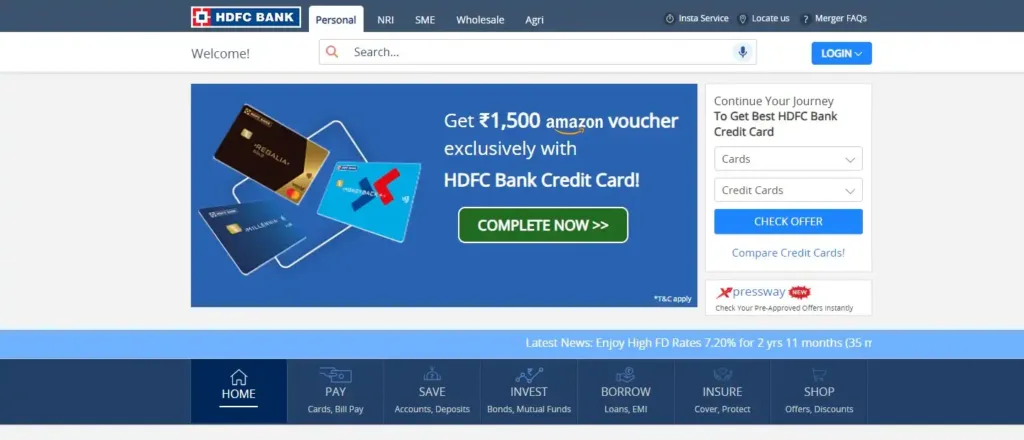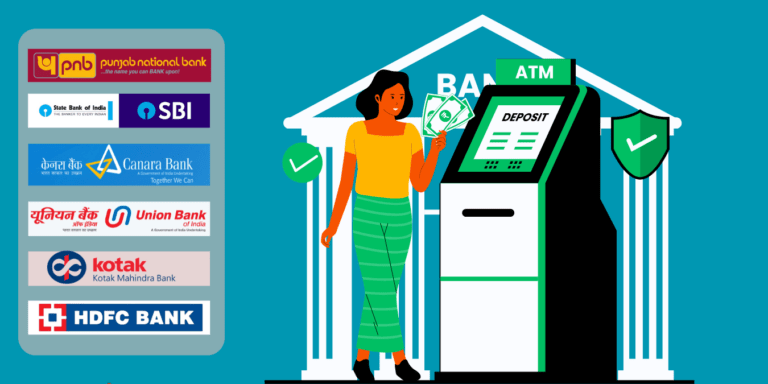
Yes Bank’s 2025 revival is a financial thriller! With SMBC’s ₹13,482 crore stake and RBI’s nod, it boasts 1.6% NPAs, a 56.7% profit surge, and IRIS’s 150+ digital features. But will customer service woes and past shadows derail this comeback? From a 2020 collapse to global buzz, Yes Bank’s journey sparks hope and suspense. Can this Indian banking phoenix soar with SMBC’s expertise?
Yes Bank stands as a phoenix, rising from the ashes of its tumultuous past. Founded in 2004, this private sector giant once dazzled with share prices soaring above ₹400 in 2018, only to plummet to around ₹18.60 by mid-2025. Governance lapses, a surge in non-performing assets (NPAs), and a Reserve Bank of India (RBI)-imposed moratorium in 2020 shook its foundations. Yet, with a State Bank of India-led bailout and strategic partnerships, Yes Bank is scripting a comeback story. The latest twist? Japan’s Sumitomo Mitsui Banking Corporation (SMBC) securing RBI approval to acquire up to 24.99% stake, a move that’s sparking curiosity and optimism. Is Yes Bank poised for a triumphant resurgence, or do challenges linger? Let’s dive into an honest, engaging, and data-driven review of Yes Bank in 2025, packed with insights, suspense, and shareable hooks.
A Rollercoaster Journey: Yes Bank’s Past and Present
Yes Bank’s story reads like a financial thriller. Once a darling of India’s private banking sector, it faced a near-collapse in 2020 due to governance issues and a spike in NPAs. The RBI’s moratorium and subsequent bailout, led by State Bank of India (SBI) and other banks, injected critical capital to stabilize the lender. Fast forward to 2025, and Yes Bank is showing signs of recovery. Its gross NPAs have dropped to an impressive 1.6%, with net NPAs at a mere 0.3%. The capital adequacy ratio stands strong at 16.2%, with Tier 1 capital at 14%. A 56.7% surge in net profit for Q1 FY 2026 signals robust financial health. But the real game-changer? SMBC’s ₹13,482 crore investment for a 20% stake, with RBI approval for up to 24.99%, marking the largest cross-border banking deal in India.
This partnership isn’t just about money—it’s about trust, expertise, and global connectivity. Yet, as we peel back the layers, questions arise: Can Yes Bank sustain this momentum? Will customer service and fees align with its premium positioning? And how will SMBC’s influence reshape its future? Let’s explore.
SMBC’s Stake Acquisition: A Turning Point for Stability
The RBI’s nod on August 22, 2025, for SMBC to acquire up to 24.99% of Yes Bank’s shares is a watershed moment. This deal, valid for one year, involves SMBC purchasing 13.19% from SBI and 6.81% from seven other banks, including Axis Bank, HDFC Bank, and ICICI Bank. Here’s why this move is sparking excitement:
Capital Infusion and Financial Strength
SMBC’s investment, valued at ₹13,482 crore for the initial 20% stake, with potential for an additional 4.9%, is a lifeline for Yes Bank. The infusion includes low-cost yen-denominated bonds and foreign currency convertible bonds, reducing borrowing costs and bolstering the balance sheet. This capital boost enhances Yes Bank’s lending capacity and supports its digital transformation, positioning it for sustainable growth.
Enhanced Financial Metrics
Yes Bank’s financial recovery is striking. Gross NPAs have plummeted from historic highs to 1.6%, and net NPAs are at a remarkable 0.3%. The provision coverage ratio is robust, reflecting prudent risk management. The capital adequacy ratio of 16.2% ensures resilience against economic shocks. SMBC’s investment accelerates these trends, enabling Yes Bank to scale operations and improve profitability.
Governance and Global Expertise
SMBC, a unit of Japan’s second-largest banking group with $2 trillion in assets, brings international expertise. With two non-executive board seats (without promoter status), SMBC will enhance governance, risk management, and underwriting standards. This move addresses past criticisms of Yes Bank’s governance lapses, boosting depositor and investor confidence.
Market and Investor Confidence
The RBI approval triggered a 5% surge in Yes Bank’s share price, reaching ₹20.20 on August 25, 2025. Despite a volatile past—down 18.9% over the year—the stock has gained 9.9% in six months, reflecting renewed optimism. SMBC’s entry signals global trust in India’s banking sector, potentially attracting more foreign investment.
Strategic and Regulatory Outlook
The deal awaits clearance from the Competition Commission of India (CCI) and compliance with the Banking Regulation Act, 1949, and Foreign Exchange Management Act, 1999. RBI’s conditions, including a cap on voting rights at 26%, ensure regulatory oversight. If completed within FY 2025-26, this partnership could integrate Yes Bank into global banking networks, enhancing its competitive edge.
Long-Term Potential
Post-2020, Yes Bank has focused on asset quality and digital innovation. SMBC’s capital and expertise support these efforts, enabling expansion in lending and digital banking. With stable leadership under CEO Prashant Kumar (extended until April 2026), Yes Bank is poised for a sustained turnaround.
The SMBC deal is a bold step toward stability, but will it translate into a seamless customer experience? Let’s examine Yes Bank’s service offerings.
Instant Cash: 5 Most Popular Reasons Why People Take a Personal Loan in 2025
Police Shoot Dead Akshay Shinde, Badlapur Assault Accused, After Gunfire Exchange
Who Wins India’s Digital Crown? Flipkart Black’s YouTube Edge vs Amazon Prime’s All-in-One
180,000 Road Deaths in 2024: Why IPPB’s Rs 10 Lakh Insurance at Rs 555 Is a Must-Have!
Customer Service: A Tale of Two Experiences
Yes Bank’s customer service is a mixed bag, evoking both praise and frustration. Some customers rave about personalized branch experiences, particularly in metro cities, where staff go the extra mile. For instance, a Mumbai-based entrepreneur shared how Yes Bank’s relationship manager resolved a loan query in hours, a stark contrast to competitors. Yet, others face hurdles, particularly with the helpline. Complaints about long hold times, unreturned calls, and unresolved issues—such as misleading credit card offers—are common on social media and review platforms.
The inconsistency stems from Yes Bank’s focus on premium segments, which often receive priority, while mass-market customers report delays. Recent efforts to streamline call center operations and introduce AI-driven chatbots show promise, but gaps remain. For customers valuing personalized service, Yes Bank can shine; for those seeking quick resolutions, it’s a work in progress.
Fee Structure: Premium Yet Evolving
Yes Bank’s fee structure reflects its premium positioning but includes customer-friendly tweaks in 2025:
- Credit Card Fees: Range from zero annual fees on entry-level cards to ₹50,000 for the elite YES Private card. Over-limit fees were discontinued in May 2025, easing costs for users.
- Transaction Fees: A 1% fee applies to fuel transactions above ₹10,000 and utility payments above ₹25,000, aligning with industry norms.
- Late Payment Charges: Waived for balances below ₹500, a relief for small oversights.
- Cash Advance Fees: Standard industry rates apply, with no significant deviations.
While premium fees cater to high-net-worth clients, the removal of over-limit charges and capped transaction fees signal responsiveness to customer feedback. Compared to peers like HDFC Bank, Yes Bank’s fees are competitive but require careful navigation to avoid surprises.
Online Banking and IRIS App: A Digital Powerhouse
Yes Bank’s digital offerings, led by the IRIS mobile app, are a standout. With over 150 features, IRIS supports UPI payments, bill payments, credit score checks, and account openings. Biometric login and SIM binding enhance security, while two-factor authentication protects against fraud. Customers praise the app’s sleek interface and seamless functionality, making it a rival to apps from ICICI and Axis Bank.
However, occasional glitches—such as slow loading times during peak usage—draw criticism. Yes Bank’s focus on digital transformation, including 24x7 access and AI-driven analytics, positions it as a leader in India’s digital banking race. For tech-savvy users, IRIS is a compelling reason to bank with Yes.
Financial Health and Market Perception
Yes Bank’s financial recovery is undeniable. Q1 FY 2026 saw a 56.7% net profit surge to ₹745 crore, driven by improved asset quality and treasury income. Gross NPAs at 1.6% and net NPAs at 0.3% reflect disciplined lending. The capital adequacy ratio of 16.2% and Tier 1 capital of 14% ensure stability. Credit rating upgrades from Moody’s (Ba2), CARE, and ICRA affirm this progress.
Yet, challenges linger. The bank’s core lending operations reported losses of ₹2,933 crore in FY25, offset by non-core income. The impending Supreme Court ruling on Additional Tier-1 (AT-1) bond writebacks could impact capital. Despite these risks, SMBC’s investment and RBI’s approval signal a brighter future, with potential for strategic collaborations and global expansion.
The Suspenseful Twist: What Lies Ahead?
The SMBC deal raises tantalizing questions. Will Yes Bank leverage this capital to dominate digital banking? Could SMBC’s expertise transform governance, erasing the scars of 2020? Or will regulatory hurdles, like CCI approval, delay the deal’s impact? The RBI’s cap on voting rights at 26% ensures SMBC’s influence remains strategic, not controlling, but two board seats could steer Yes Bank toward global best practices.
Another twist: Yes Bank’s CEO transition. Prashant Kumar’s term ends in April 2026, and the search for a successor is underway. SMBC’s board presence could shape this decision, ensuring alignment with long-term goals. The market is watching closely—will Yes Bank emerge as a top-tier private bank, or will past shadows resurface?
Shareable Hooks and Emotional Resonance
- Hook 1: “From a 2020 collapse to a 2025 comeback, Yes Bank’s ₹13,482 crore deal with SMBC is rewriting its story. Is this India’s banking phoenix?” Share this to spark curiosity!
- Hook 2: “Yes Bank’s IRIS app is a digital delight, but can its customer service match up? Discover the truth behind India’s banking saga!” Perfect for social media buzz.
- Emotional Pull: For Indian customers, Yes Bank’s journey mirrors resilience—a bank that stumbled but is fighting back with global backing. It’s a story of hope, grit, and redemption.
Stunning Suggestions for Customers and Investors
- For Customers: Opt for Yes Bank’s digital services via the IRIS app for seamless banking. If helpline access is crucial, consider metro branches for personalized service.
- For Investors: Monitor Yes Bank’s stock for short-term gains post-SMBC deal. Long-term potential hinges on CCI approval and AT-1 bond outcomes.
- For Digital Enthusiasts: Explore IRIS for UPI payments and credit score tracking—its security features rival global standards.
- For Premium Banking Seekers: The YES Private card offers elite benefits but comes with high fees. Weigh costs against perks before committing.
Summary Table: Yes Bank at a Glance
| Aspect | Experience Summary |
| Customer Service | Mixed; stellar branch experiences in metros, but helpline delays frustrate some users. |
| Fee Structure | Premium for elite cards; over-limit fees scrapped, with capped transaction charges. |
| Online Banking | IRIS app shines with 150+ features, secure payments, and minor glitches. |
| Financial Health | NPAs down to 1.6%, 56.7% profit surge, robust 16.2% capital adequacy ratio. |
| Strategic Outlook | SMBC’s 24.99% stake boosts credibility, governance, and global growth potential. |
Final Thought
Yes Bank’s 2025 narrative is a gripping tale of redemption. From the brink of collapse to a ₹13,482 crore lifeline from SMBC, it’s carving a path toward stability and innovation. The IRIS app dazzles, financial metrics impress, and global expertise promises growth. Yet, customer service inconsistencies and regulatory hurdles remind us: the journey isn’t over. For customers seeking digital prowess and investors eyeing a turnaround, Yes Bank is a name to watch. Will it soar to new heights or face unexpected twists? Only 2025 will tell—stay tuned, India.

































